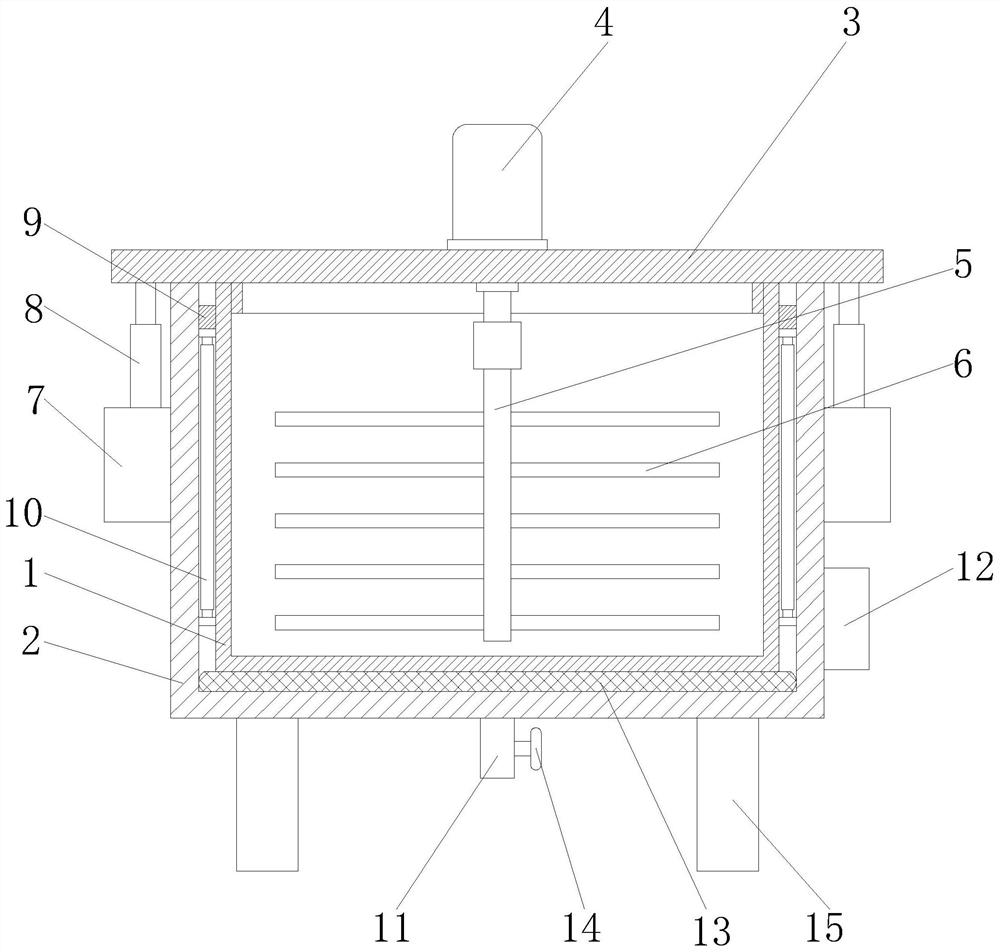Slurry mixing device for non-woven fabric production
A technology of mixing devices and non-woven fabrics, which is applied to mixers, mixers with rotating stirring devices, transportation and packaging, etc., which can solve the problems of serious heat loss and inconvenient cleaning of the inner cavity
- Summary
- Abstract
- Description
- Claims
- Application Information
AI Technical Summary
Problems solved by technology
Method used
Image
Examples
Embodiment Construction
[0018] The following will clearly and completely describe the technical solutions in the embodiments of the present invention with reference to the accompanying drawings in the embodiments of the present invention. Obviously, the described embodiments are only some, not all, embodiments of the present invention. Based on the embodiments of the present invention, all other embodiments obtained by persons of ordinary skill in the art without making creative efforts belong to the protection scope of the present invention.
[0019] Such as figure 1 As shown, the slurry mixing device for non-woven fabric production in this embodiment includes an inner barrel body 1, an outer barrel body 2 and a top cover 3. A motor 4 is arranged on the upper part of the top cover 3, and one end of the output shaft of the motor 4 passes through a coupling A stirring rod 5 is connected, the stirring rod 5 extends through the top cover 3 to the inner cavity of the inner barrel body 1, the outer wall o...
PUM
 Login to View More
Login to View More Abstract
Description
Claims
Application Information
 Login to View More
Login to View More - R&D
- Intellectual Property
- Life Sciences
- Materials
- Tech Scout
- Unparalleled Data Quality
- Higher Quality Content
- 60% Fewer Hallucinations
Browse by: Latest US Patents, China's latest patents, Technical Efficacy Thesaurus, Application Domain, Technology Topic, Popular Technical Reports.
© 2025 PatSnap. All rights reserved.Legal|Privacy policy|Modern Slavery Act Transparency Statement|Sitemap|About US| Contact US: help@patsnap.com

